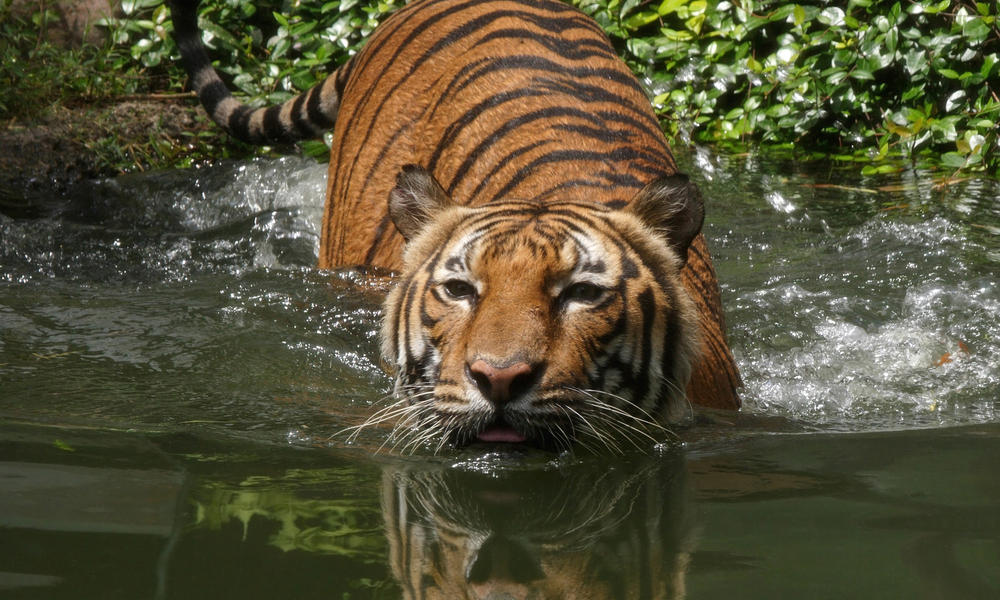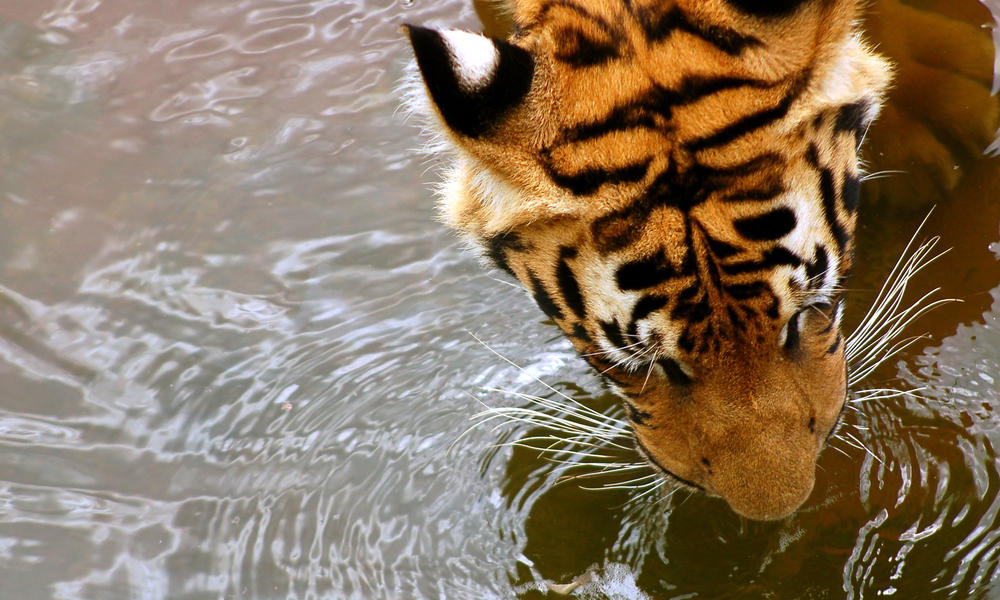INDOCHINESE TIGER:
In 2010, the alarm for the Indochinese tiger sounded because the population of this subspecies had fallen by more than 70% in just over a decade. Six countries—Thailand, Cambodia, China, Lao People's Democratic Republic, Myanmar and Vietnam—are now home to only around 350 tigers.
 |
| © Connie Lemperle / WWF-Greater Mekong |
The region contains the largest combined area of tiger habitat in the world—equal to roughly the size of France. However, rapid development, such as road construction, is fragmenting habitats. Due to decades of rampant poaching many of the landscapes of this region have no tigers left in them.
 |
| By Wikipedia |
There is hope in other remaining Indochinese tiger habitats, which have a relatively low human presence and offer a unique opportunity for tiger conservation. The best hope of the survival of this subspecies is in the Dawna Tennaserim landscape on the Thailand-Myanmar border where perhaps 250 tigers remain. WWF considers the forests of the Lower Mekong a restoration landscape with the possibility of reintroducing tigers as the habitat and prey base are there. Southern Laos and Central Vietnam also have potential for recovery of wild tiger populations.
 |
| By zmescience.com |
Access to the areas where Indochinese tigers live is often restricted, and biologists have only recently been granted limited permits for field surveys. As a result, there is still much to learn about the status of these tigers in the wild.
FACTS ABOUT INDOCHINESE TIGERS:
 |
| © Howard Cheek / WWF-Greater Mekong |
- STATUS:
- POPULATION:
- SCIENTIFIC NAME:
- WEIGHT:
- LENGTH:
- HABITATS:
WHY THEY MATTER:
Maintaining tiger habitats in the Greater Mekong directly benefits a host of other globally important species like Asian elephants, Asiatic black bear, a suite of wild cattle and many endemic deer.
 |
| © CK Wong / WWF-Greater Mekon |
THREATS:
Indochinese tiger numbers are in shocking decline across its range because of shrinking habitats, expanding human populations, and the increasing demand for traditional medicines, folk remedies and wild meat.
POACHING AND ILLEGAL WILDLIFE TRADE
Vital tiger populations are also depleted by a growing commercial demand for wild meat in restaurants. In the Lower Mekong Forests region—Cambodia, Lao PDR, Vietnam—prey densities are very low due to intensive hunting and weak law enforcement over the past few decades. Wild tigers are also poached in order to meet increasing demand for tiger body parts used in traditional medicine and new folk tonics. Tiger farms in Thailand, Vietnam and China maintain the demand for tiger products from all sources—including the wild—and worsen the poaching problem.
HABITAT LOSS:
 |
| By wwf.org.nz |
While healthy habitats are extensive in some areas they are under constant pressure from agricultural plantations, mining concessions and inundation from hydropower development. Habitat fragmentation due to rapid development – especially the building of road networks—is a serious problem. This fragmentation forces what tigers are left into scattered, small refuges, which isolates populations and increases accessibility for poachers.
RARE DISCOVERY:
↰
A rare population of Indochinese tigers has been discovered and filmed in the jungles of Eastern Thailand.
The tigers were found thanks to the efforts of Freeland and Panthera, two wildlife conservation groups working in conjunction with Thailand’s Department of National Parks, Wildlife and Plant Conservation.
These images and video, captured via camera trap and released on March 28, show not only adult tigers, but cubs. This is evidence of the “world’s second breeding Indochinese Tiger population…[and] the first evidence of a breeding population in Eastern Thailand in over 15 years” according to a press release issued by the organizations.
Only about 8 percent of tiger grounds have confirmed breeding populations, Panthera reported, and this discovery indicates that the tigers could potentially disperse and repopulate the surrounding countries of Cambodia and Laos.
Only 221 Indochinese Tigers are estimated to be alive in Thailand and Myanmar, according to the Freeland and Panthera press release. Thailand’s Huai Kha Khaeng Wildlife Sanctuary is the only other known breeding ground for the giant felines.
 |
| By Shutterstock |

No comments:
Post a Comment